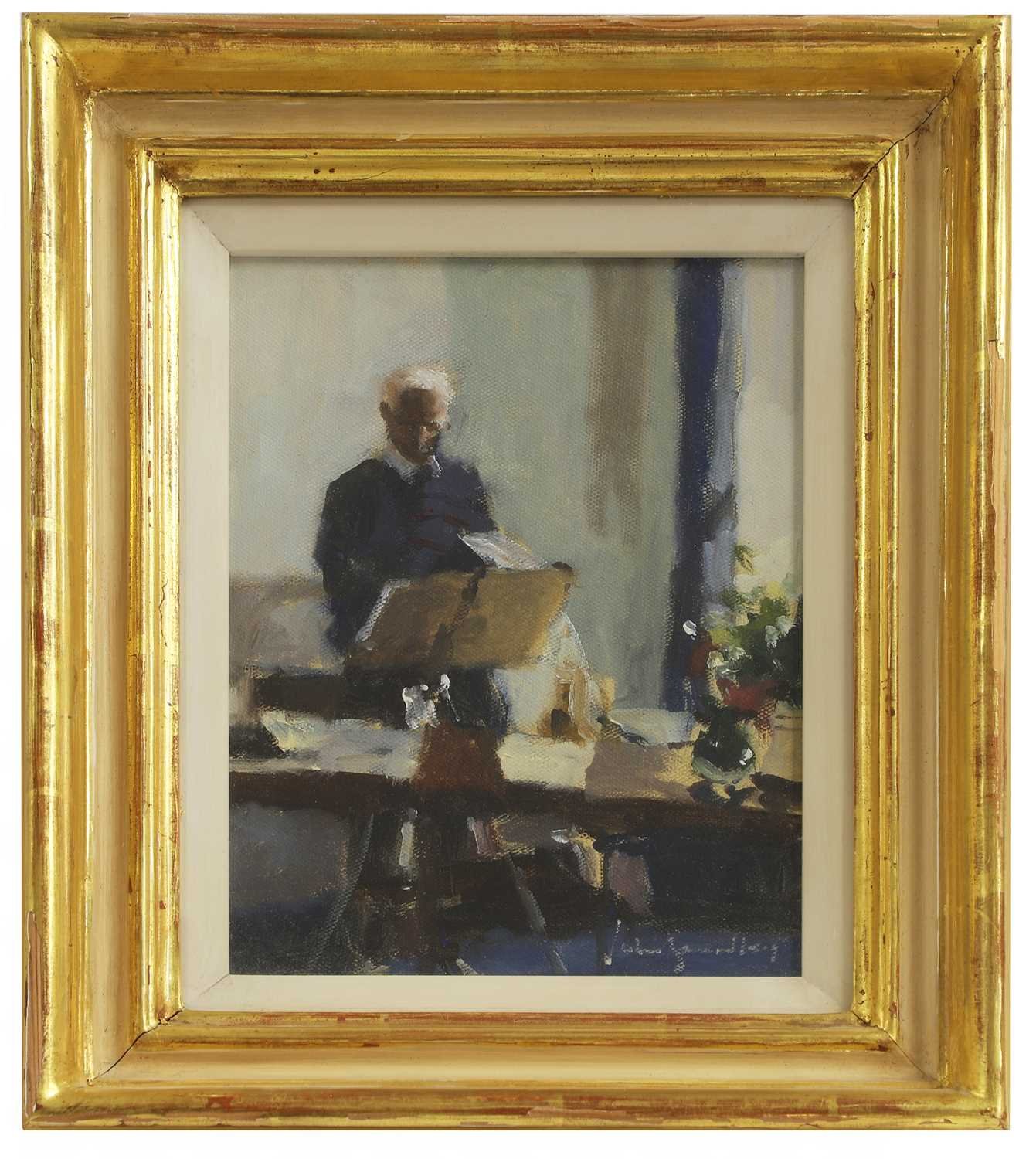John Yardley (b. 1933)
John Yardley, born in Beverley, Yorkshire, is regarded as one of Britain's finest contemporary impressionists. Notably, he embarked on his artistic journey later in life, transitioning from a career in banking to full-time painting in 1986. Remarkably, he achieved this without formal artistic training, a factor he believes has contributed to his distinctive and unrestrained style.
Yardley's paintings are characterized by their vibrant brushwork, minimalist compositions, and a profound ability to capture the essence of a scene with a few confident strokes. He often begins with a quick pencil sketch, followed by a direct application of paint, aiming to preserve the spontaneity and movement inherent in the moment. His subjects range from urban street scenes and coastal landscapes to interiors and floral studies, frequently inspired by his own garden. A defining feature of his work is the use of light to evoke mood and atmosphere, often employing a limited palette to achieve tonal harmony.
Despite being largely self-taught, his artistic vision has been shaped by a number of key influences, both stylistic and philosophical. Edward Seago (1910–1974), a master of impressionistic landscape and marine painting, was one of Yardley’s earliest and strongest influences. Like Seago, Yardley’s art pursues clarity and simplicity, focusing on capturing the spirit of the subject rather than photographic detail. This is achieved through his loose yet controlled brushstroke, allowing form to emerge organically through suggestion rather than precision. Like Seago, Yardley has a deep interest in light effects, particularly in relation to architecture and atmospheric landscapes. Yardley has often acknowledged Edward Wesson’s (1910–1983) influence on his approach to technique. Wesson’s philosophy of “less is more” deeply resonated with Yardley’s minimalistic, intuitive style. Both artists emphasise bold brushwork, wet-in-wet application, and an economy of marks, choosing only what is essential to describe a scene. Yardley has credited Wesson as a key figure who validated the idea that painting should be fluid and expressive, not overly laboured. More generally, Yardley’s work shares much in common with the French Impressionists, particularly their love of everyday scenes (cafés, markets, interiors, and gardens), focus on the light, movement, and the ephemeral nature of visual experience, and a commitment to working directly and spontaneously, often on location (en plein air). Yardley's paintings echo the informality and atmosphere of artists like Monet, Pissarro, and Vuillard, albeit distilled through his own tonal sensibility.
John Yardley’s influences blend the technical confidence of Edward Wesson, the atmospheric lyricism of Edward Seago, and the spontaneous spirit of the Impressionists, all filtered through a personal lens of intuitive observation. This synthesis has produced a uniquely understated yet expressive voice in British painting—one that continues to inspire both peers and emerging artists.
In 1990, Yardley was elected a Member of the Royal Institute of Painters in Watercolours (RI), a testament to his skill and contribution to the medium. He has exhibited regularly at the Royal Watercolour Society, earning several awards for his work. His artistic endeavours have garnered international attention, leading to exhibitions across Europe and the United States. Additionally, Yardley has been the subject of multiple publications, including The Art of John Yardley (1990), and has featured in several instructional videos on watercolour techniques. His influence extends to teaching, having conducted workshops and demonstrations for aspiring artists. His works are held in many significant collections and have maintained their popularity with collectors to the current day.
John Yardley, Painting Flowers (detail), Oil on canvas (18 x 22.5cm), framed and glazed (28.5 x 34cm). Signed.

